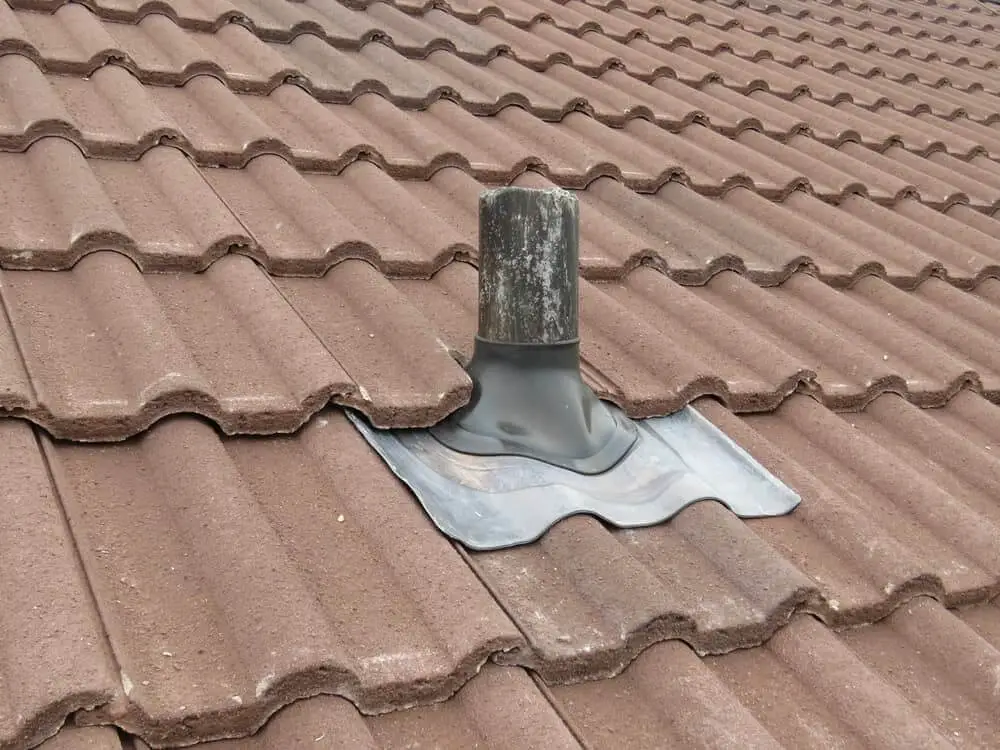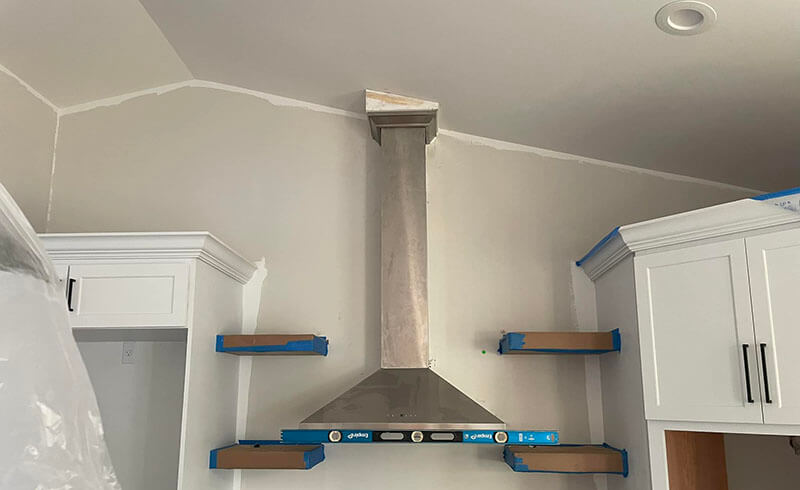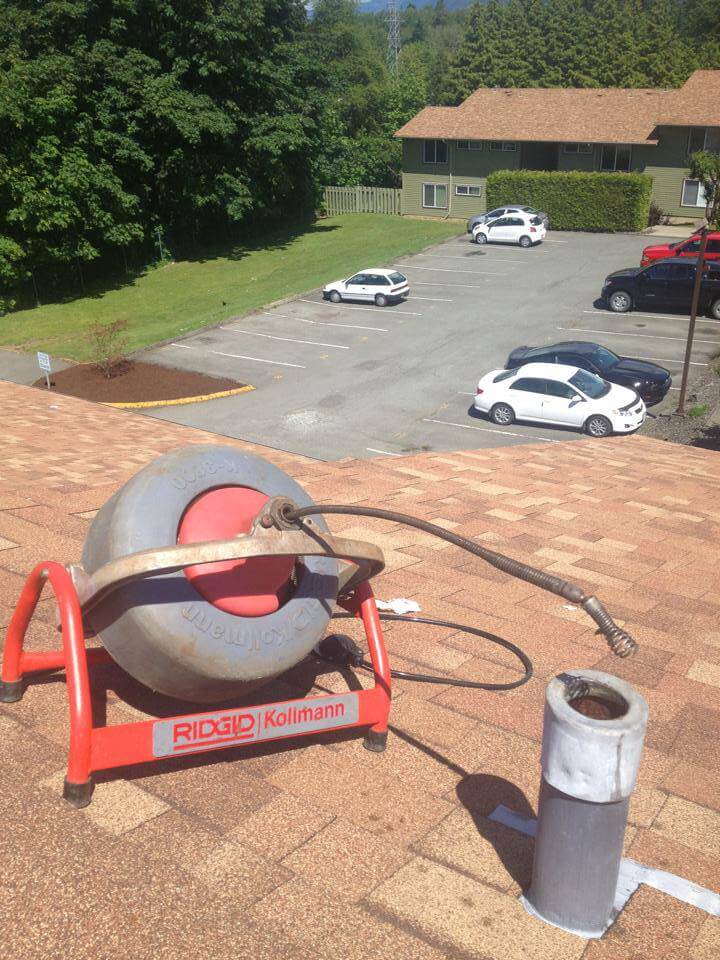Not long before, just a couple of weeks ago, my plumbing vent got clogged, and as you can relate, it was a hassle. In that situation, I used enzyme-based drain cleaners because organic things were clogging the vent. And before that, I faced the same issue and used a flange plunger to solve that because it was handy. But that’s not all the solution.
You can also unclog the plumbing vent without getting on the roof using methods and tools like a high-pressure water method, an auger/snake, not to mention a flange plunger, or enzyme-based drain cleaners.
You can use any of the methods at your convenience. I discussed every single method in detail in the following sections.

Quick Jump
How Do I Know If My Plumbing Vent is Clogged?
Some definitive signs and symptoms will tell you that your plumbing vent is clogged, and you need to take action to prevent any further issues and unclog the plumbing vent.
I won’t go into detail, just a brief idea overall.
Sign #1: The most obvious sign is that if you hear strange gurgling noises from your drains or toilets, especially when you flush or use the sink, it could be a sign of a clogged vent.
Sign #2: You might notice that your sinks, tubs, or showers take longer than usual to drain. That’s because a clogged vent can disrupt the airflow in your plumbing system, leading to slow drainage.
Sign #3: Another definite symptom is foul odors. The trapped air and buildup of organic matter can create unpleasant odors that waft back into your home.
Sign #4: You might notice changes in water levels in nearby fixtures when you flush the toilet or drain a sink. It is definitely a suction or pressure Issue inside the clogged vent.
Sign #5: Bad odors are one thing, but you might also notice unusual or pungent smells in the attic or crawlspace areas. It might happen if a clogged vent causes sewer gases to escape through the roof and accumulate in your attic or crawlspace.
Sign #6: Lastly, If your toilets are overflowing or your drains are backed up frequently, it could be a sign of a clogged vent.
Why Is It a Problem Getting on the Roof to Unclog the Plumbing Vent?

If you get to the roof to unclog the plumbing vent, several things could happen to you or your roof. Or, sometimes, the roof could be too snowy to get up to. Besides, there are some other reasons too.
Let me explain why it can be problematic to get on the roof to unclog a plumbing vent.
One of the most common issues that could arise is the safety concern. Roof work can be hazardous, especially if you’re not experienced or equipped with proper safety gear. Climbing onto a roof poses risks like falls, slips, and injury from tools or materials.
The next reason is it could damage a part of the roof. Walking on the roof can cause damage, especially if it’s older or fragile. The weight and foot traffic can lead to cracked or broken shingles, damage to the underlying structure, or leaks.
Avoiding unnecessary roof access helps preserve the roof’s integrity and reduces the chances of costly repairs.
Sometimes, we don’t have the proper experience to unclog the plumbing vent from the roof. Without proper training or experience, you might inadvertently cause more damage or fail to resolve the issue effectively. In that case, It’s best to rely on experienced professionals trained to handle such tasks.
And sometimes, we don’t have the options to access the roof, or certain situations might make it challenging or impractical to access the roof, such as multi-story buildings, steep roofs, or adverse weather conditions. It can be time-consuming and costly to arrange roof access in these circumstances.
Another thing I see these days is warranty issues. If your roof is relatively new and still under warranty, specific clauses or conditions could void the warranty if you access the roof improperly or perform unauthorized work.
It’s essential to review your warranty documentation and consult with a professional before attempting any DIY roof-related tasks.
That’s all I know or experienced, but there could be more!
4 Ways Unclog a Plumbing Vent without Getting on the Roof
I understand that not everyone feels comfortable or can get on the roof to unclog a plumbing vent. Besides there are other reasons that I also discussed in the previous sections.
You can try alternative methods to clear the vent without risking your safety. Let me walk you through some effective techniques:
Method #1: Using a Plunger
It is one of the most common methods I used, and It’s super effective. You will need a flange plunger specifically designed for toilets to execute the method.
And here are the steps that you need to follow.
- You need to create a seal first. That’s why fill a bucket with water and pour it into the drain closest to the clogged vent.
- Place the plunger flange over the drain opening to ensure it’s properly sealed.
- Now’s the main part. Push down on the plunger firmly, and then pull back quickly.
- Repeat the plunging motion several times, building up pressure to dislodge the obstruction.
- You might hear or listen to any gurgling sounds or signs that the vent is clearing.
Method #2: Using a High-Pressure Water Method
Sometimes you might not have a toilet plunger. That’s fine if you have a garden hose with a nozzle attachment. With that, you can use the high-pressure water method to unclog the plumbing vent.
- The first step is to locate the drain closest to the clogged vent.
- Afterward, you should attach the nozzle to your garden hose and turn on the water supply.
- You must be careful now to insert the nozzle into the drain opening.
- Slowly and steadily increase the water pressure, aiming it down the drain. As a result, it will create a powerful flow which will ultimately help break up the clog and clear the vent.
- Lastly, you might notice the signs of improvement, such as the water flowing more freely or the vent making gurgling sounds. It will mean that the plumbing vent is unclogged now.
Method #3: Using an Auger or Snake Method
The third method uses an auger or snake, a long, flexible tool designed to reach into pipes. After you get that, follow these steps.
- First, Insert the auger or snake into the drain opening closest to the clogged vent.
- Now, Gently push the tool into the drain, slowly maneuvering it down the pipe. But you must be careful not to apply too much force to avoid damaging the pipe.
- Now comes the hard part, where you must rotate or crank the auger or snake as you go to break up or remove the clog.
- After that, slowly withdraw the tool, checking for any signs that the obstruction has been cleared.
- If it’s not completely cleared, repeat the process.
Method #4: Using an Enzyme-Based Drain Cleaners Method
Oil, meat, or random organic things can clog up the vent, and enzyme-based drain cleaners can be effective in those situations.
Remember to go through the instructions on the product carefully, as different cleaners may have specific usage instructions.
- Now, pour the recommended cleaner into the drain closest to the clogged vent.
- Let it sit for the specified time, allowing the enzymes to break down the clog.
- Lastly, flush the drain with water to help remove any residual debris. That might do the job.
How to Prevent Clogging in the Plumbing Vent

There are some things you can do to prevent all these from happening. I can provide you with some tips on how to prevent clogging in the plumbing vent.
A little bit of regular maintenance can go a long way when it comes to preventing clogging in your plumbing vent. Let me share some handy tips to keep your vent flowing smoothly:
- The most common culprit for vent clogs is debris like leaves, twigs, and even birds nests. Regularly check the area around your vent and ensure it’s clear of any obstructions.
- You can also consider adding a vent cap or screen to your plumbing vent. These simple yet effective devices help keep out larger debris and prevent them from entering the vent pipe.
- Accidental damage to the vent can lead to clogs. If you’re planning any roofing projects or repairs, communicate with your contractor about the location of the plumbing vent.
- Avoid flushing or draining items that can easily cause clogs, such as grease, oil, food scraps, hair, and hygiene products.
These are the most common issues, and we often do them. If you want your plumbing vent to be unclogged, ensure to maintain those tips.
Lastly, having a professional roofer inspect your roof regularly is always a good idea.
Wrap Up
I hope I was any help, and you can now unclog your plumbing vent without getting on the roof. I discussed multiple ways with specific steps. If you have any more queries, let me know in the comment section, and I will get back to you with answers.
Have a good day!

Roger Lewis is an experienced roof repair contractor with over 15 years of industry experience. He is known for his expertise in all aspects of roof repair, including leak detection, shingle replacement, and gutter repair.
